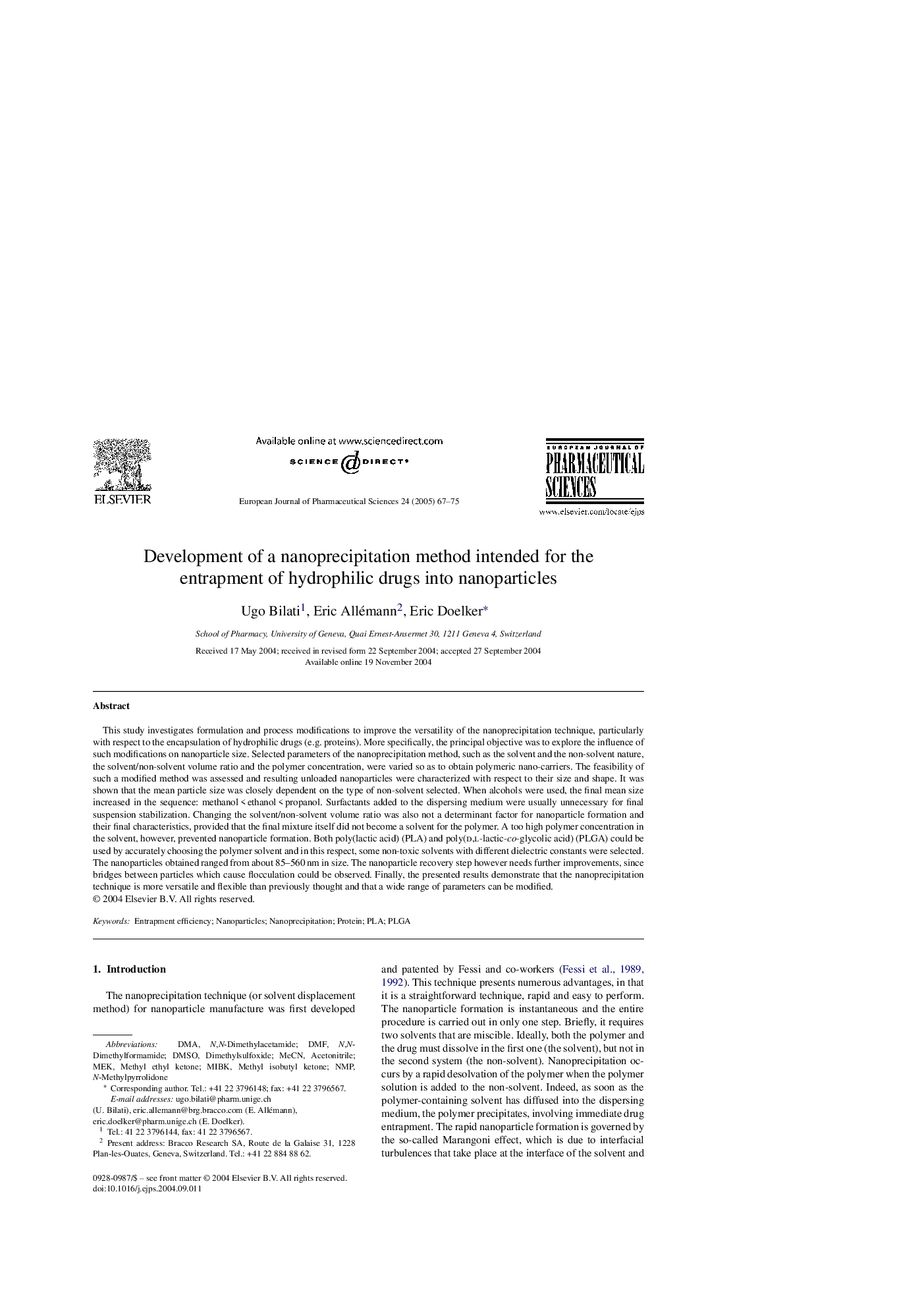| کد مقاله | کد نشریه | سال انتشار | مقاله انگلیسی | نسخه تمام متن |
|---|---|---|---|---|
| 9917780 | 1556313 | 2005 | 9 صفحه PDF | دانلود رایگان |
عنوان انگلیسی مقاله ISI
Development of a nanoprecipitation method intended for the entrapment of hydrophilic drugs into nanoparticles
دانلود مقاله + سفارش ترجمه
دانلود مقاله ISI انگلیسی
رایگان برای ایرانیان
کلمات کلیدی
PLGAMECNNMPNanoprecipitationPLAN-MethylpyrrolidoneMIBKDMADMFDMSO - DMSON,N-Dimethylacetamide - N، N-dimethylacetamideN,N-dimethylformamide - N، N-dimethylformamideAcetonitrile - استونیتریلDimethylsulfoxide - دیمتیل سولفواکسیدEntrapment efficiency - راندمان جذبMethyl ethyl ketone - متیل اتیل کتونmethyl isobutyl ketone - متیل ایزوبوتیل کتونMEK - مجاهدین خلقNanoparticles - نانوذراتProtein - پروتئین
موضوعات مرتبط
علوم پزشکی و سلامت
داروسازی، سم شناسی و علوم دارویی
اکتشاف دارویی
پیش نمایش صفحه اول مقاله

چکیده انگلیسی
This study investigates formulation and process modifications to improve the versatility of the nanoprecipitation technique, particularly with respect to the encapsulation of hydrophilic drugs (e.g. proteins). More specifically, the principal objective was to explore the influence of such modifications on nanoparticle size. Selected parameters of the nanoprecipitation method, such as the solvent and the non-solvent nature, the solvent/non-solvent volume ratio and the polymer concentration, were varied so as to obtain polymeric nano-carriers. The feasibility of such a modified method was assessed and resulting unloaded nanoparticles were characterized with respect to their size and shape. It was shown that the mean particle size was closely dependent on the type of non-solvent selected. When alcohols were used, the final mean size increased in the sequence: methanol < ethanol < propanol. Surfactants added to the dispersing medium were usually unnecessary for final suspension stabilization. Changing the solvent/non-solvent volume ratio was also not a determinant factor for nanoparticle formation and their final characteristics, provided that the final mixture itself did not become a solvent for the polymer. A too high polymer concentration in the solvent, however, prevented nanoparticle formation. Both poly(lactic acid) (PLA) and poly(d,l-lactic-co-glycolic acid) (PLGA) could be used by accurately choosing the polymer solvent and in this respect, some non-toxic solvents with different dielectric constants were selected. The nanoparticles obtained ranged from about 85-560 nm in size. The nanoparticle recovery step however needs further improvements, since bridges between particles which cause flocculation could be observed. Finally, the presented results demonstrate that the nanoprecipitation technique is more versatile and flexible than previously thought and that a wide range of parameters can be modified.
ناشر
Database: Elsevier - ScienceDirect (ساینس دایرکت)
Journal: European Journal of Pharmaceutical Sciences - Volume 24, Issue 1, January 2005, Pages 67-75
Journal: European Journal of Pharmaceutical Sciences - Volume 24, Issue 1, January 2005, Pages 67-75
نویسندگان
Ugo Bilati, Eric Allémann, Eric Doelker,